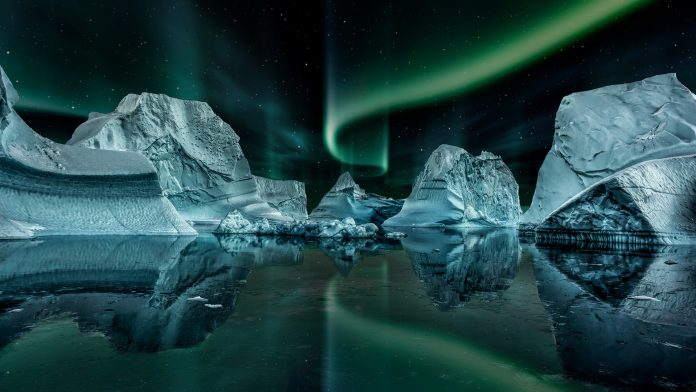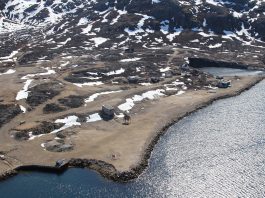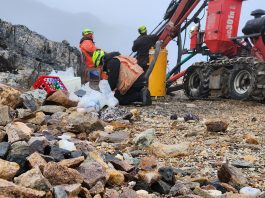An old cryolite mine and an untapped rare earth endowment hold unique importance for greater powers than its junior Australian owner.
A chasm of an open pit resting on the banks of the fjords of the Labrador Sea looked more the part of a biblical disaster than a mine.
However, the Greenlanders of the twin settlements of ‘Green Valley’ Kangilínguit and Grønnedal didn’t build their townships around a cataclysm, but Ivigtût, a massive and singular known naturally occurring source of cryolite.
Greenland’s historical mining importance
Ivigtût was mined for a century and a half before the shutters came down in 1987, and the pit was drowned with water. The story of what is now Ivittuut is not over, as there, within eyesight amid the melting snow, lies a mineral endowment holding strategic importance for greater powers than its Australian owner.
The semi-autonomous nation of Greenland has long had a unique global value. Long before the ambitious Donald Trump announced intentions for the US to buy Greenland off Denmark in 2019, then-US president Harry Truman proposed its purchase as a geographical defence against Soviet bombers. During Truman’s 1945-53 leadership, the area now known as Kangilinnguit had been in US hands, with the US military protecting its prized cryolite quarry area during World War II. Later, the US handed back the area dubbed Green Valley to the Danish in 1951.
Greenland is of different importance in modern times. As the ice melts and lucrative sailing routes open, untapped resources have again captured the attention of major geopolitical powers. China views Greenland as an entry point into the Arctic, the United States as its northernmost military presence, and both as potentially massive sources of rare earth elements.
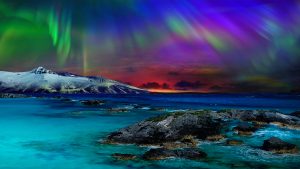
The Grønnedal Rare Earth Project
Eclipse Metals views a slice of Greenland as its own after looking north in 2021 and seeing a well-studied but neglected pair of assets at Ivittuut and the company’s Grønnedal Rare Earth Project.
The Executive Chairman of Eclipse, Carl Popal, discussed the importance of the project and Greenland’s potential in the critical minerals market. He said: “The project was a good deal, with a lot of untapped potential, which needed to come to the surface and be rejuvenated. These historical facts and figures warrant exploration. While this pursuit is scientific in nature, it does not preclude the discovery of geological veins of prosperity.”
A scratch through the surface of the Grønnedal project, which became Eclipse’s maiden resource, proved its acquisition had more than the benefit of location.
A 1.18 million tonne resource grading 6859 parts per million (ppm) total rare earth oxide came from the surface of Grønnedal to a shoveler’s depth of 9.5m. All mineralised holes ended in high-grade rare earth, and the resource remains open wherever you look while representing a small fraction of what is a largely untested carbonatite intrusive.
Popal notes it has all the signatures of being among, if not the largest, rare earth deposit in Europe. He said: “The geophysical results suggest the potential depth of up to 500m, yet we haven’t drilled to such an extent. The resource within the single lens is about 80,000 tonnes per vertical metre, there are more lenses within the carbonatite footprint which we haven’t even touched yet.”
The raw size has yet to be fully encapsulated by the JORC code mineral resource estimate, and while rare earth deposits can be complicated, multiply the 2200 tonnes of contained neodymium in the current resource alone by its selling price to see a value roughly five times Eclipse’s current market cap on the Australian stock market.
Eclipse’s helmsman tips they could pump those numbers up pretty easily if they wanted to. Popal noted: “People are actually considering drill results of 500-600 to 1000 ppm to be promising. Here at Grønnedal Hills, we are calculating our resource with a cutoff of 2000 ppm in just the small area we have explored within the carbonatite footprint!”
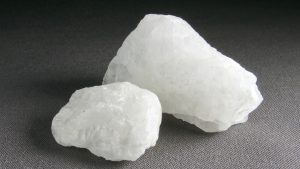
Tapping into new cryolite resources
It’s even more exciting, considering this is just the Grønnedal project. An old cryolite mine and its unique geology give a sense of how incredible this area’s scale and potential are.
Describing this cryolite mine, Popal explained: “It was formed like a big cannon firing from the centre of the earth, in a pipe-like structure, and it shot out a whole pile of minerals like a club sandwich. The mine, with over 130 years of history, was active from the late 1800s to the late 1980s. It was first mined for lead and silver, then for the rare mineral cryolite. Some cryolite still exists there within the pit environment. Below that was silica, zinc, and quartz, not what they were after historically, and so it was just left behind without even assaying the core!”
With the company now having access to the 19,000m of cores, Eclipse has this resource to tap and is planning to soon take a proper look at the partially mined marvel at Ivittuut. On the subject, Popal says: “We’re assessing the core further, and throughout the summer, we’ll be having an extensive programme trying to understand below within the pit to see what’s going on.”
There is a lot of value within the pit environment, with the real prize likely to be high-purity silica, a presumably common but strikingly finite resource whose demand for high-purity products is soaring due to modern technology.
Lower-end products are ubiquitous in the glass and concrete that are used to build our cities. Despite the market shortage of high-purity silica quartz, Popal highlights the challenges in identifying suitable end-use products for chip manufacturing, solar and other applications. He said: “If we really look at the tech industry, high-purity silica is as critical as anything, and demand is growing massively for semi-conductors and silica wafers.”
China is conducting extensive sea dredging in search of high-purity silica quartz but it is encountering challenges. The pit first needs to be dewatered for Eclipse to take its own look at depth, but the company won’t be delving into the bottom without a plan in place. As Popal said: “Following a process is part and parcel of developing a big project. The plan is to make sure all our permits are in place to have access to the bottom and open for offtake.”
Seizing the opportunity
Because of all the fascination with geopolitics surrounding Greenland and its untouched trove of commodities, Eclipse has a job to do in finding them.
Popal concludes: “We’re putting our hands together to develop this, but we’re a small company and understand that there’s an opportunity here. We will act in the best interests of our shareholders, and per the saying ‘first in, best dressed’, better quality will be available to those who seize this opportunity first. The potential in Greenland is massive, and the world knows that, but if people are going to procrastinate, it will be their loss.”
Written by Jack Baker, Market Open
Please note, this article will also appear in the 18th edition of our quarterly publication.

